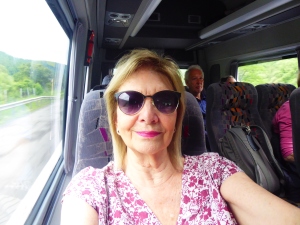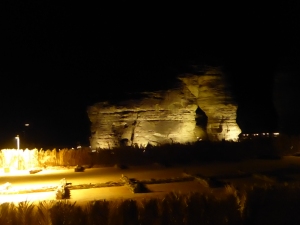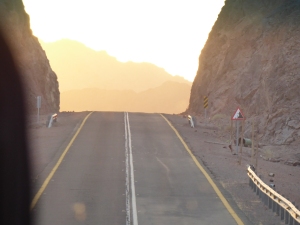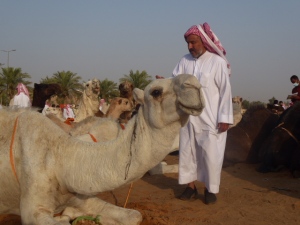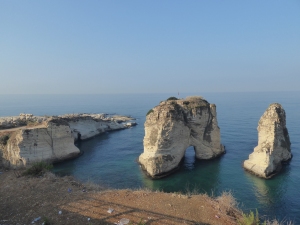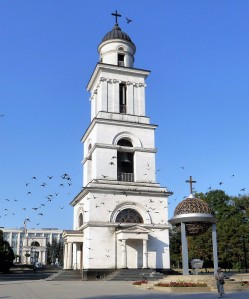REGENT HOLIDAYS JUNE 2023
I thought of simply writing a few key words, leaving you to draw your own conclusions as I didn’t keep a diary this time (too hectic a pace, plus the fact that the novelty of writing a blog is beginning to wear off after 30 or so!) So, here are those words…… followed by brief descriptions. If you’d like to know more, read on afterwards as I’ve had second thoughts!
BULGARIA – Beautiful. Basic. Brave. Biblical…… and Bent!
The simply descriptive: Surprisingly, a member of the EU (till you study the map of E Europe and think about it!); rather refreshingly unsophisticated; agricultural/rural economy; old-fashioned; sparsely populated – around 7 million (can you imagine, 1/10th of our population in about half the space?); a long, turbulent history of conflict, occupation and war-mongering; wine and rakia (brandy) -producing; visible reminders of 20th C Communism architecturally, linguistically, culinarily and culturally; hearty food; the world’s leading producer of rose oil; AN EARTHQUAKE!!
The good news: Woke-free!; cheap; beautifully, lusciously mountainous; lovely Black Sea beaches (apparently); good skiing (apparently); rose oil; impressive historic churches and monasteries with even more impressive and historic frescos; interesting cave complexes; charming historical towns; AN EARTHQUAKE!!
The bad news: corrupt – 72nd of 180 on the Corruption Perception Index ’23 “Trading Economics”. (Somalia is at the top – most corrupt, still – Denmark remains the least corrupt and the UK is 18th, down fr 11th when I last looked a couple of years ago); backward/old-fashioned services and service; Communist mind-set; appalling breakfasts; quite a lot of stuff that doesn’t work (air-con, lifts, loos etc;); 1950’s style kiddie gender-stereotyping; AN EARTHQUAKE!!
In retrospect, I might call Bulgaria charming. With an air of “pre the fall of the USSR”, a distinctive history and character and refreshingly different from its neighbours (Romania – with which it bears some comparison – Serbia, Macedonia, Greece and Turkey) it’s been, and is, quite in the thick of things geographically, politically, religiously, historically. Mostly it felt old-fashioned, things often didn’t work or weren’t available (I got excited at the prospect of a spa at one hotel but it had shut down), food was plain (basic, no choice, plonked down in front of us), service and attitude were often poor – though in a way this was refreshing as it reflected the fact that B is relatively new to tourism (apart from skiers and sunbathers on hen n stag week-ends).
Oh, and the very worst breakfasts I’ve ever had the misfortune to pick at, anywhere. Although people at historic sites and in museums were a bit more friendly, indifference and/or surly attitudes were, sadly, the order of the day. Quite often we felt as though we were in 1970s Russia. The bus I think was from the 1970s, though its driver was excellent (lots of fag breaks – him, not his passengers). Generally, places were clean and graffiti- and litter-free. Landscapes were unspoiled and very beautiful.
I fly directly to SOFIA, pronounced SOFF-ia, the capital, then make a triangular loop by road, diverting north en route to and from the northern border with Romania. In the south we’re four fields from Greece.
Day 2 And we’re off! The weather is cool and dull, a relief after my last two trips (Saudi A and Ghana). The first hotel is A Sign of Things To Come facility- and service-wise ie not much of either! Still, I’d made myself comfortable last night by rearranging the bedding and bits of furniture and this morning am raring to go. The Group is pretty typical (see the end of blog). One good thing – the daily start time is never earlier than 9.
Through surprisingly pretty countryside to Bulgaria’s Mediaeval capital, Veliko Tarnovo. On the way we stop at the first (of very many!) monasteries, The C17th Troyan Monastery. Historic, striking, interesting and the country’s third largest, it’s home to the much revered icon, The Three-Handed Virgin (don’t ask! Pics not allowed so here’s one off t’internet)……..
……..and many, MANY wonderful frescoes. It’s pouring with rain and a bit dismal as we’re treated to a long, extremely detailed, occasionally interesting (more like an academic series of lectures than a summary for only fairly interested tourists), tiringly long-drawn-out tour of the site by our guide S. Little do I realise – at this stage – that this will become the norm everywhere we go and that the word “Thracians” is to crop up so many times over the following days that I’ll come to dread it! To relieve the boredom today I count the number of times it crosses S’s lips and now know 100% more about these admittedly admirable and important peoples than I did before. (But if I never hear their name ever again I’ll be happy).
[I tell you the above to give you an idea of S’s depth of knowledge, the lengths to which he went to impart his extensive – and passionate – understanding of these ancient colonisers (and other, more recent ones: the Greeks, Romans, Ottomans and Russians) who had such direct, often dramatic, sometimes detrimental, effects on his little country. The hours seemed endless as we stood patiently – in our Very British Way – not wanting to be rude by shouting out what we were thinking (“GET ON WITH IT! 200 yrs back is more than enough, thanks mate”) as he recounted 11 centuries’ worth of history in the rain, in the sun, in the wind, at the start, in the middle, at the end of the day every day, in churches, monasteries, mosques, fields, towns, up mountains, in museums, homes, farms, ….. well, you get the picture. We, tummies empty/bladders full/legs aching/brains foggy, politely feigning interest or sneaking off to pretend to take photos of cobbles and cars, quietly grumbling that it was more than anyone should be asked to bear. The record, non-stop, standing-there-trying-to-look-vaguely-interested-yet-longing-to-take-the-weight-off-our-feet session was 37 mins! One of the group, a qualified London Walking Tour Guide, tried to help – but made things worse! – by revealing his rule of thumb is “5 mins max chat at any one time!”]
Tsarevets Castle was home to a line of Bulgarian Kings/Tsars who ruled, on and off – mainly off – between the C1st AD and WW2 (in 1946 a referendum was held and the monarchy abolished).
To Asen’s Fortress and Bachkovo Monastery, perched on a crag above a river at the narrow end of a dramatic gorge. Like many such sites, this one occupies a stunning, prominent, defensive position above woods on a hillside with sweeping views down the valley to make spotting marauders a mile off easy. Today, the part-ruined site sits peacefully above the river, the walls of its tiny church covered in frescoes – naturally – and with an air of tranquility. High up in the clean clear air, I look down on carpets of daisies and wooded slopes and listen to birdsong. (I’m also sweating as it’s been a long climb!) Unlike in the UK there are no warning signs to WATCH YOUR STEP! to BEWARE! or to KEEP OUT!!, although there is one little knee-high notice advising, with a child-like drawing of someone with arms flailing, not to jump over the (made-of-2-wires) fence! The drop the other side must be 1,000 feet…..
[All this makes me look – not for the first time – more closely at the UK’s history and be thankful for these small islands’ position on the edge of Europe, far from troubled areas such as this. If you’re thinking “Here goes Veronica, exaggerating again”, may I tell you – if you didn’t know already, as I didn’t – that Thracian-Occupied History in these parts stretches from the 10th C BC to the C1st AD so there’s a lot of it! S, impressively, is not only extraordinarily familiar with 90% of it but determined that we should be as fascinated by it as he is, hence his lecture-ritual being repeated several times a day, for the duration. Yes, I did feedback to the company, though I had to word it carefully as S was simply over-keen – and over-qualified].
Veliko Tarnovo, despite being a touristy town set higgledy-piggeldy (rather like an Indian Hill Town) overlooking a spectacular river valley, is – unusually for here – a bit scruffy, neglected, run-down and littered…..
……but it’s also architecturally charming, unusual, picturesque and historic. When a HUGE, left-over-from-Communist-Days, Brutalist-style, peeling cream-painted hotel is pointed out to us across the gorge (and we suggest it might be worth preserving as a memento of Russian Occupation Times) S is angry and dismissive. It takes a few days for us to realise that a Western European View of Things may be a very narrow one and that nostalgia and admiration for architecture that reminds citizens of recent invasions by foreign powers is not something that those on the receiving end can view with dispassion. What a world of difference there is between we Brits, gazing from the perspective of centuries on, at – say – a Roman Theatre in St Albans or a Roman fort in Cumbria, and Bulgarians looking at a still-standing, abandoned-by-occupying-Russians-in-1991 hotel. Lesson learned for the rest of the trip.
Next, an open air museum, Baldwin’s Tower and the ancient “Throne City”, perched on another hillside, all photogenic, unspoiled by visitor crowds and with interesting back-stories. Our itinerary promises “a delicious lunch” – which is pushing it a bit though we’re hungry and can’t complain. Portions are enormous, if samey, and I wonder how and why this poor country wastes so much food. Perhaps it’s trying to impress…….or do Bulgarians have hearty appetites? 
Our hotel in Arbanassi promises much: caged peacocks and quails, a pool, decorative pointless little wooden bridges and a kiddies’ playground (er, no thanks to any) and is described as “rustic” which means nothing works and the breakfast is rubbish. I move room as the air-con in the first has conked out. The second is hardly better but I daren’t say anything. The room cost on the back of the door is so cheap that I take a pic as proof. (There are around 2 lev to the £). Breakfast is unappetising (cold floppy toast or watered down artificial apple juice, anyone?) The toaster is “Kaput!” (the owner), the hot water for tea and coffee is tepid and there’s no sign of anything cereal-like, though there are scowls and eye-rolls a-plenty from the staff. (And why does nowhere have fruit when we’re surrounded by rich agricultural land and they boast about producing the best cherries on the planet?)
Next day, a fresh sunny morning and UNESCO-listed rock-hewn monasteries at Ivanovo in Rusenski National Park and Cherven Castle. A pretty, steady climb on foot up mountain paths, past wild flowers, breathtaking views, trees clinging to slopes, birds swooping and singing – and a group of chattering Taiwanese Tourists who, being younger than us, just beat us to said rock-frescoes and we have to wait our turn, the spell of the clear quiet morning half-way up a mountain now cruelly shattered.
As we wait, I try to imagine how – and why – any human is motivated to dedicate his allotted time on Earth to an imagined god, thus forgoing his only chance of LIVING A LIFE. Luckily for us, the time these monks devoted to decorating the rough, cream-coloured cave-walls here was well spent; they’ve left magnificent frescoes for us to enjoy centuries later. I get up close, marvelling at the detail, delicacy and delight of these “primitive” works…… I could buy pamphlets, earrings or little icon fridge magnets from a small woman behind a small table, but don’t.
We lunch outside at a simple restaurant in what the itinerary describes as “the city” (more a very small town) of Ruse. The food, already familiar in its dull sameness is, sadly, once again disappointing. The view across The Danube, 150 m away – here a border – is the opposite, revealing Romanian fields and docks. We’re just a few miles south of Bucharest!…..
Tuesday, so it must be Plovdiv. Our journey takes us through the gorgeous Shipka National Park and a 4,000 ft Pass in the Balkan Mts. We make a welcome stop half-way up, the prettiest of locations for a caff and petrol station (free, clean loos in such places are a boon) and photograph The Liberty Memorial, symbol of modern, liberated Bulgaria – freed from Ottoman Rule at the end of the C19th. (S has almost nothing positive to say about this interlude in his country’s past).

The magnificent Shipka Memorial Church sits nearby, onion domes glittering in the bright sunshine, half-hidden within a thick grove of trees. Regent‘s travel notes describe it as “exquisite” and truly it is. On to Kazanlak, and a Thracian Tomb, another UNESCO World Heritage Site. Discovered – buried on a hillside – only in 1944 this C4th BC little gem (beehive-shaped and brick-built) is so delicate and ancient that the tiny tomb-like building we have to crouch to enter (“Four at a time only!“) is a perfect replica, the original – behind bricks, bars and locks alongside – being too rare, delicate, precious and unstable to allow curious tourists into. Once again, the frescoes are astonishingly beautiful, delicate and detailed. I feel as awestruck as I did in Tutankhamun’s Tomb in the Valley of the Kings. It’s as if these artists have just popped out for lunch too.
The Rose Museum, as you’ll imagine, is fragrant, fascinating and fabulous – there are old photos and etchings of valleys bursting with sweet-scented bushes and of hard-working labourers; maps of ancient trade routes exporting the precious, labour-intensive oil to Western European capitals (there’s a replica of a shop-front in one of London’s Victorian Arcades where the imported oil – and a host of by-products – ended up); equipment used to harvest, process and export this extraordinary natural product and beautifully displayed “stuff”: ancient barrels, old drawings, scent jars, sieves and other tools, baskets, machines, costumes, plant samples, labels, phials and elaborate bottles…….plus (early) photos and (later) videos of Rose Queen Festivals, held annually for hundreds of years apart from – yes, you’ve guessed it – 2020. As a bonus, the whole museum smells sweetly, unmistakably of ROSE.
Outside, a gaggle of noisy, elderly, overweight Greek tourists are organising themselves for a group photograph. A Greek Orthodox priest snaps them on his i-phone as they squeeze into too-small toy-town train seats, before trundling off on a tour round the museum grounds. I buy a tiny phial of rose oil for a friend and rose-flavoured (what else?) Turkish Delight for myself!
The Valley of Roses, Bulgaria’s (the world’s!), leading exporter of rose-oil and home to dozens of small farms, is like a vast, well-tended vineyard. Kilometer-long lines of shoulder-high plants reach far up the valley and vanish to a point like an exercise in perspective drawing. It’s peak harvest time and every bush, laden with precious flowers, is drooping wearily, branches bobbing and leaves trembling in the breeze. In the mid-afternoon sun, the air is heavy with floral sweetness, reminding me of childhood summers (and pointless hours) spent in the garden trying to create “scent” by mashing rose petals – with a wooden peg! – in a tea-cup. (Yup, I am 97!) Now, plucking a full-blown, velvety-petalled, dusky-pink, delicate flower feels like sacrilege, but I do it anyway and breathe in the heavenly, heady perfume. I muse that every time I smell a rose from now on I’ll be reminded of this moment, this place……..
Back on the bus, I slide my rose into the pocket on the back of the seat in front of me, leave it there and watch it fade over the next few days. On the way to the airport I gingerly – and sadly – remove it, papery petals turning to dust in the air – and between my fingers – as it disintegrates into nothingness. I’d sniffed it every time I’d returned to the bus for 6 days; the scent never diminished, even as it shrivelled and died.
[“It takes 60,000 roses to produce 1 ounce of oil. Because of the high cost of organic rose production and process of extraction, Bulgarian rose oil is considered the best in the world. Its export complexity and labour-intensity of its production makes it so expensive. Out of 150,000 species of rose – yes really! – only 5/6 are used for essential oil and 2 of those, Damask and Cabbage are the most cultivated. In 2019, a kilogram of rose oil was worth between $8,200 and $9,400, which made it more expensive than gold”. ecomat.co.uk ]
In the tiny village of Kalofer we’re guests of a local folk-dance teacher and her farmer husband. Sitting in their orchard on little chairs in dappled sunlight under ancient fruit trees, we sample home-brewed Rakia (fruit brandy), sour-tasting yogurt and traditional bread as we gaze over cultivated farmland and listen to their tales of close-knit communities, family ties, handed-down traditions, skills, country ways and attitudes and I think “I have an inkling of where it might all going wrong for our “multicultural”, fragmented, self-obsessed society back home“. Nearby, pretty, classy, not-working-horses graze – which seems a bit odd. When I ask what they’re for, I’m told “I’m not sure. The farmer who owns them isn’t either, but he receives EU subsidies for breeding them ….. and for growing acres of runner beans”. I think “Remind self to check Waitrose’s runner beans’ labels when I’m next in”. You must draw what conclusion you will on the horse-breeding thing……….
Plovdiv – such an unfamiliar word to shape your mouth around! – is, with good reason, Bulgaria’s City Jewel in their Crown and was European Capital of Culture in 2019. Dating back to C5th BC Thracian times – of course! – via the Romans, the Ottomans and everybody else, the present-day Plovdiv is arguably the prettiest of Bulgarian cities, boasting impressive, extensive – and very visible – Roman ruins (a huge, well-preserved amphitheatre to start with, now used for musical concerts), iconic Russian Brutalist–style public buildings (Post Office etc), pretty tree- and proper-arty-graffiti-lined shopping streets and……..
………..the walled Old Town, another UNESCO World Heritage Site, with delightful, steep cobbled streets, quirky cafes, old churches and beautifully distinctive, Farrow and Ball coloured, C19th houses (still occupied) with charming walled gardens. (It reminds me very much of the fairy-tale villages in Transylvania). We spend our free afternoon traipsing, enjoying drinks in artsy coffee houses, souvenir-shopping, admiring the prettily-painted everythings, the churches, homes and gardens, getting lost and snapping away at every turn with our cameras and phones as though there’s no tomorrow. The grander homes have been turned into museums – but museums of the accessible “Let’s make them look as though the families have just popped out to visit their neighbour” sort. Look at Chazza, sitting on a bench downtown!
In the middle of a guided tour round one of these museums IS WHERE I HAVE MY FIRST – AND LIKELY ONLY! – EARTHQUAKE EXPERIENCE!!
Standing with the site guide in a cosy carpeted room, P, R, S and I are taking in his description of the furniture and the plumbing when, out of the blue, there’s a perceptible trembling in the air and a loud, unsettling rumble. (Not, I’m told later, The Earth itself but the shifting house foundations. Yikes!). At one and the same time ordinary and extraordinary, this unsteadiness – and the rumble – continue for a few seconds, as if a lorryload of boulders is being dumped in the road right outside the open window. The guide has paused and I hear myself blurting out…… not what I’m thinking, but something instinctive, a feeling that hasn’t consciously registered.
“Was that ……erm, an earthquake?” Bizarrely, I seem to know that ………
……… it WAS!!! A 4.9 on the Richter scale, real live ‘quake (epi-centre, a mere 4 km away) deeply but gently rocking us, the furniture, the old house, the whole of Plovdiv and its environs (not for the first time! Earthquakes are not uncommon in these parts; we’re close to Turkey and Syria, after all, and we know about their earthquake histories), all shifted for ever on this soft, warm June afternoon, the ground below our feet briefly but determinedly rearranging itself and re-settling without a by-your-leave. The rest of the group, shopping or sightseeing or sipping tea somewhere, thought “something happened” but weren’t sure – till we tell them! The four of us hereafter think of ourselves as “Earthquake Buddies”. (My pointy finger marks the spot where I was standing!)
Next, TRIGRAD GORGE with its 250m overhanging cliffs, as dramatic and unspoiled as anywhere in Europe and two stunning Cave Complexes – both freezing (6 degs – which I alone think is a perfect temperature). We “enjoy” a dripping, echo-y, dank and dark, somewhat creepy tour with an on-sight guide. 21 km of natural deep-underground tunnels (we scramble and slide an hour of them) hide us from the mountain above and the daylight. Luckily, although we often have to stoop, sometimes have to watch our step, occasionally have to climb metal stairs, 3 or 4 times have to stop, shivering, to listen to impressive facts and figures and once pause to peer, in the light of the guide’s mobile phone torch, at a dozen or so naturally-formed, tiny “pearls” – geological curiosities, mere millimetres in diameter – nestling in a small indentation on a rock-sill and protected from vandals and thieves (imagine!) by an ugly Perspex box. It’s all fascinating and different. There are no frescoes!
The cave statistics are astonishing. Those related to TIME – incomprehensible aeons of it – are truly scary and hard to get your head around. The caves, their 100s of 1,000s of years old stalactites and stalagmites clinging to or reaching for the ceiling, the weird rock formations (“See The Devil’s Throat? See the giant’s profile. the alligator, frog, leopard-skin?” Leopard-skin??!), the underground lake, the somewhat creepy stories (dead bodies in underground rivers, disappeared explorers making me want to shut my mind to everything that’s not NOW and trivial) aren’t quite as impressive as those I visited in Lebanon, but they are second best. (OK, I’ve only been to 3, ever…., But these are memorable). Excellent guided tours by site guides who have attended different Tour Guide Training Schools from S – thank heavens – so to the point, succinct and relevant; short, sharp stops along the way. It’s nice to be back in the fresh mountain air, to saunter along the winding wooded road to lunch even though, OF COURSE, its the ubiquitous, boring by now, Chopska salad as a starter and indeterminate “meat” to follow.
I haven’t mentioned the vineyards and wine-tasting experiences in Melnik as the trip was rather perfunctory and disappointing – and should be taken out of the tour if you ask me. Also, my air-con didn’t work in the pretty but unreliable hotel so I didn’t sleep and was tired and bad-tempered the next day.
In the S W, the RHODOPE MTS and “There’s Greece, 200m away. Get a pic, quick!” as if it’s going to disappear! In DEVIN, 2 members of the local Folk Singing Club, one a piper, the other a singer, entertain us over supper (in the hotel that advertises itself as a SPA hotel but where the SPA is closed), surprising us with their sudden appearance, proximity, extreme volume and bouncy enthusiasm. Their performance is ever-so-slightly-embarrassing at close eye-meeting quarters but authentic and moving – if, like me, you’re a fan of huge, sheep-stomach bagpipes and a female voice so boomingly powerful that it’s wasted in the hotel dining room and should be heard from across a valley like a Swiss Alphorn.
Some of the group try to keep straight faces while others find excuses to go to the loo or to move further away. Despite our awkwardness, the performance knocks spots off the terrible touristy tired n pretentious shows I’ve had the misfortune to have to endure in places like Istanbul and Cairo….. This delightful couple seem genuinely pleased to be performing for us, are charming, friendly, speak not a word of English (why should they?) and seem proud of their talents and culture. Which is how it should be! Just as well as the hotel feels on its last legs and sharing our Last Supper with hordes of excited, out of control, unsupervised 11 yr old school kids, left by their teachers (sitting at the bar) to run free for hours is no-one’s idea of a great final night, especially mine!
Last Day and we have a whistle-stop, tantalising tour of SOFF-ia which should have happened on the first day (so as to give us a flavour of the country’s history). A beautiful city with French-style public buildings, an Opera House (best seats £17 – I told you Bulgaria was inexpensive!) and theatres, ancient mosques and churches, a magnificent Cathedral……
…….classy shopping streets, boulevards, parks, posh hotels, coffee shops, Parliament, Royal Palace, all you’d expect from a European Capital. Oh! and a wedding!!! (I ALWAYS manage to see a wedding on my trips!) I’d like to re-visit Sofia at leisure. I can’t tell you very much about it here, except that it was very appealing, reminded me a bit of Vienna and that it has a main road (badly damaged in WW2) which is paved with yellow bricks made in and transported from Budapest, for reasons I’ve forgotten. Sadly, I’m too tired to enjoy the city fully – and yes, I have fed this back to the company!
And finally, Bachkovo Monastery is home to the most impressive collection of frescoes I think I’ve seen anywhere outside Italy. The price to be paid, you’ll have worked out, is very many minutes – tired and on our last legs – of enforced-listening to over-long explanations. This sums up our week’s experience neatly……
…….Shiroka Lake would be lovely if it weren’t tipping down with hailstones the size of tooth-fillings bouncing off the verandah and with a storm closing in until the lake itself disappears. So…….time to go home.
And so we do!
READ ON IF YOU’RE INTERESTED IN THE PEOPLE IN THE GROUP.
There seems to be A Typical Collection of People on the tours I do. This one was true to form. I daren’t imagine what they say about me as a group member, but My Blue-Print For Participants, built up over many years, goes something like this:
1 amazing, elderly individual, eccentric, independent and adrift of the group (no, not me!) This person is indomitable, has been everywhere (prob in the 1970s or even 60s), is polite but not really a joining-in person and has travelled on his/her own to places you and I couldn’t point to on a map or that no longer exist – or, if they do, they now have a different name. If you’re lucky, this person will spend time with you, dropping amazing, scarcely credible tales about their travels over half a century into their conversation. (If you’re not lucky, they will keep themselves to themselves). They’re now forced, through sheer unwelcome Old Age (and/or chivvying from Gen Z family members), to join Group Tours. This indignity they bear with fortitude. They’re always fascinating and sometimes become your friend when you get home, unless they live in Orkney, which was my experience once.
1 Couple Who, Despite Being Well Past 50, Insist On Holding Hands At Every Opportunity, (Whaaaat? And why?) They also do everything at the same time and choose the same things off menus – even telling each other what they’ve chosen. They’re almost always dull and you try to avoid sitting next to them for the duration as you don’t want to chat about gardening, grandchildren, knitting or – very common this one – illnesses and dying.
1 Couple Who Think They Are “A Cut Above”. This manifests itself in their sitting separately on the bus and at meals and wandering off on their own at sites, mainly because they think they know better than the rest of the group (and sometimes than the guide!) They let everyone know they are experts in local wines, that they speak the language, have likely been here before, when it was more authentic – and there were no direct flights – and wear John Lewis’ “What To Wear When Travelling To Slightly-Off-The-Beaten-Track Places” label clothing, often matching.
1 Delightful Couple who are really kind, generous, easy-going, good company and rather “dark horses” travel-wise (ie Russia in 1968) with a great sense of humour. They are often Northern and invite you to sit with them at meals if you look lost.
I Rather Bad-Tempered Elderly Person who is a bit of a know-all, gives you the impression s/he wishes they were on a different tour at a different time with a different company and with different companions. (Again, not me!) They’re often eccentric, divorced/separated, professional and defensive. Sometimes, but only sometimes, they grow on you.
1 Slightly Odd Single Person – often female – who’s a dark horse: much more interesting than they consider themselves to be and usually with a hidden talent (speaks the local lingo fluently, keeps alpacas, is an expert Marriage Guidance Counsellor, or who has written a book (but doesn’t tell you till the last day!) on S American Opera, East European Politics, Glaciers or Tropical Birds of SE Asia – depending on where the trip is headed. They are slow to warm to the whole trip but can turn into A Life-long Friend. They also quite often Know More Than The Guide.
1 (Almost always) Female of a Certain Age who is easy-going, fun, friendly, and all-round Fabulous. This person you click with at the start, seek out on walks, climbs, free-time and meals as they are generally THE best company. Quite often they turn into friends, regardless of where they live! These are the best people to sit next to whenever you can.
THAT’S ALL FOLKS!!
